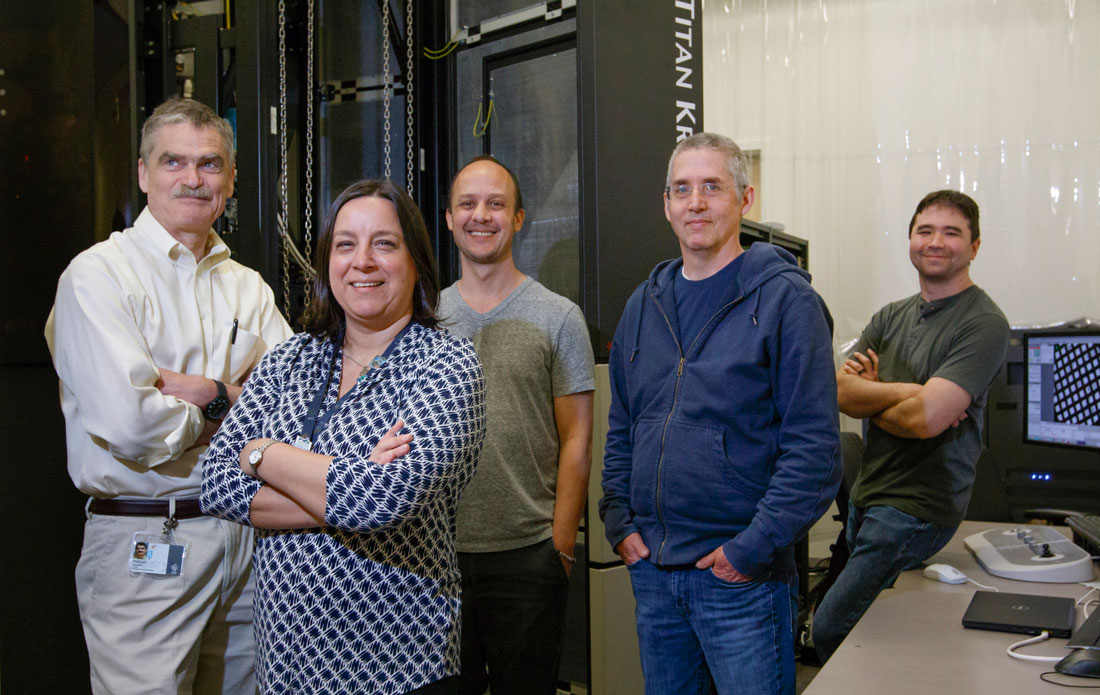Scientists have long imagined how they could improve treatments for a host of diseases if they could better see how individual cells carry out the functions of life. That goal is now within reach at OHSU, thanks to a huge new investment in technology that allows researchers to view the makeup of molecules nearly down to the atom.
OHSU has won a multi-million-dollar federal grant to become a national center for a new imaging technology that is revolutionizing research in cancer, neuroscience and a host of other areas.
OHSU, partnering with the Pacific Northwest National Laboratory in Richland, Wash., is one of three institutions that will share a $128 million award from the National Institutes of Health to expand research and education in cryogenic electron microscopy – or “cryo-EM” for short.
“This puts OHSU on the map as a major player and participant in the national electron microscopy scene.”
Eric Gouaux, PhD, senior scientist, OHSU Vollum Institute and investigator with the Howard Hughes Medical Institute
These are not the microscopes of your high school or college science classes. They use a beam of electrons instead of visible light to reveal extremely detailed three-dimensional images of cells.
Because of these microscopes’ unique ability to show how large networks of molecules are organized in fine detail, researchers expect the technology will accelerate development of effective treatments for many forms of cancer, neurological diseases such as Alzheimer’s, and a range of other conditions.
The scientists who developed cryo-EM won the Nobel Prize in chemistry in 2017, and now the NIH hopes to bring the technology and training to more researchers through this grant.
“This puts OHSU on the map as a major player and participant in the national electron microscopy scene,” said Eric Gouaux, PhD, investigator with the Howard Hughes Medical Institute and a senior scientist in the OHSU Vollum Institute.
The other two national centers that received the grant are the New York Structural Biology Center – a consortium of nine academic institutions including Columbia University and Memorial Sloan Kettering Cancer Center – and the SLAC National Accelerator Laboratory at Stanford University. The grant was awarded after a highly competitive process.
Philanthropy over many years supporting novel imaging instrumentation enabled OHSU to innovate and serve the national and international scientific community, strongly positioning OHSU to earn this major national grant. Transformational gifts by Phil and Penny Knight and other donors allowed OHSU to recruit scientific rock stars such as Joe Gray, PhD, an international leader in systems biology and the Gordon Moore Endowed Chair in Biomedical Engineering. When Gray was recruited, OHSU had the building that would house his lab built specifically for cryo-EM instruments. Microscope manufacturer FEI established a partnership with OHSU in 2011 to build the Living Lab for Cell Biology, and the FEI Titan Krios cryo-EM microscope went online in 2012. Grants from The Collins Foundation, W. M. Keck Foundation and M.J. Murdock Charitable Trust helped leverage even more support. Investment from donors such as Bernard and Jennifer Lacroute helped OHSU labs make the transition from x-ray crystallography to cryo-EM. All of these investments combined enabled OHSU to become early adopters of the latest microscopy technology and compete among the best labs in the country.
Being able to see the structure of molecules is a giant leap for scientists working at near-atomic levels. In just a few years, scientists around the world have made important discoveries with this technology. Now, OHSU is poised to make many more.




